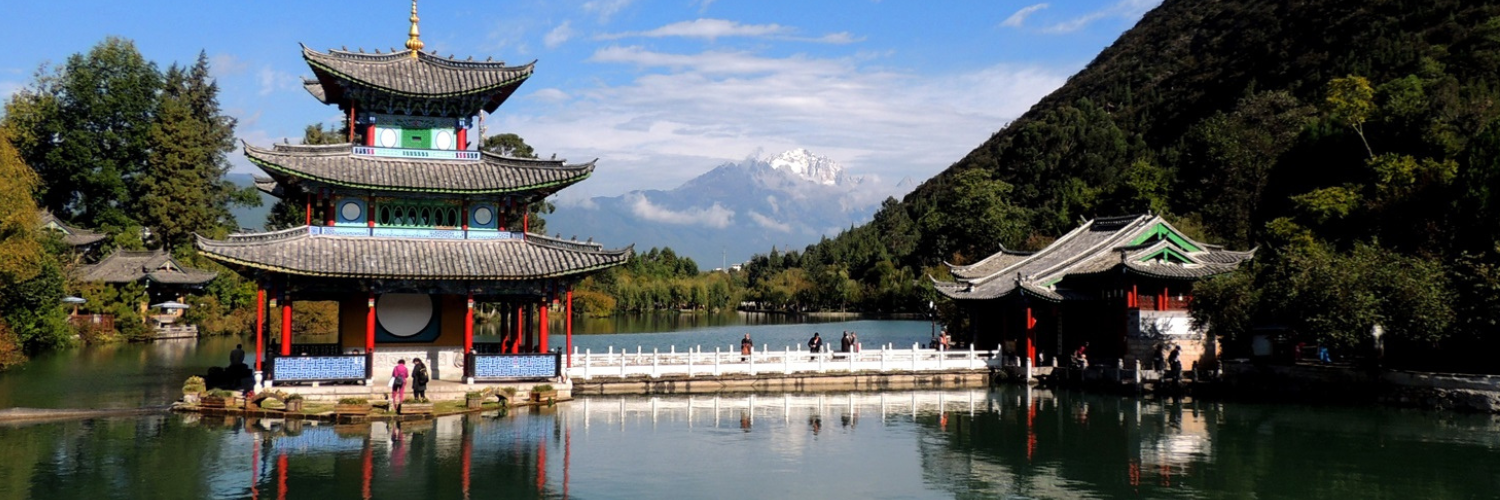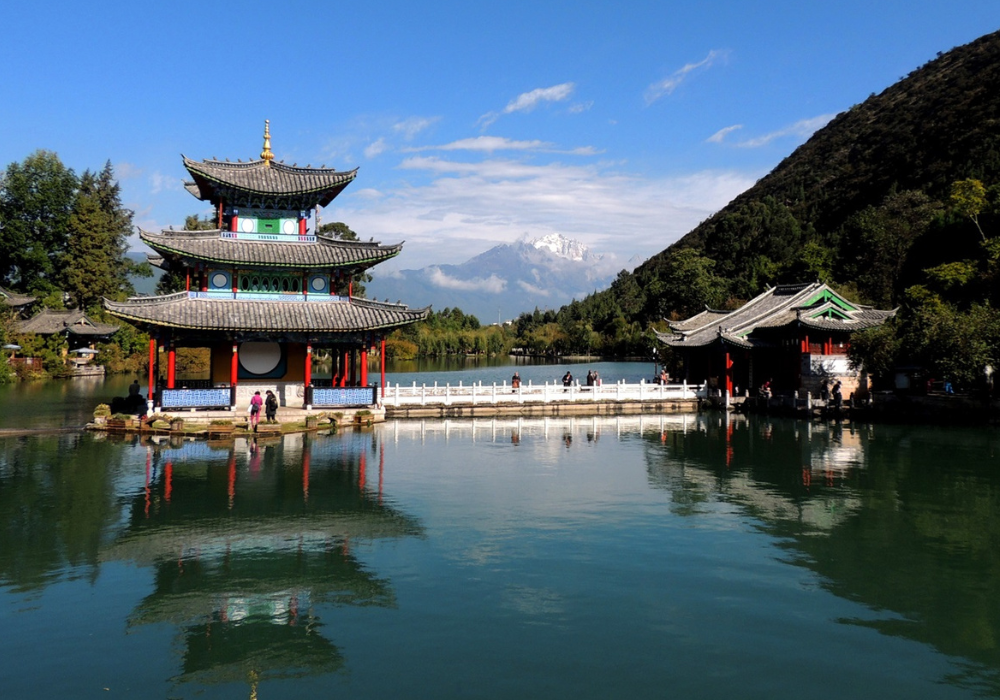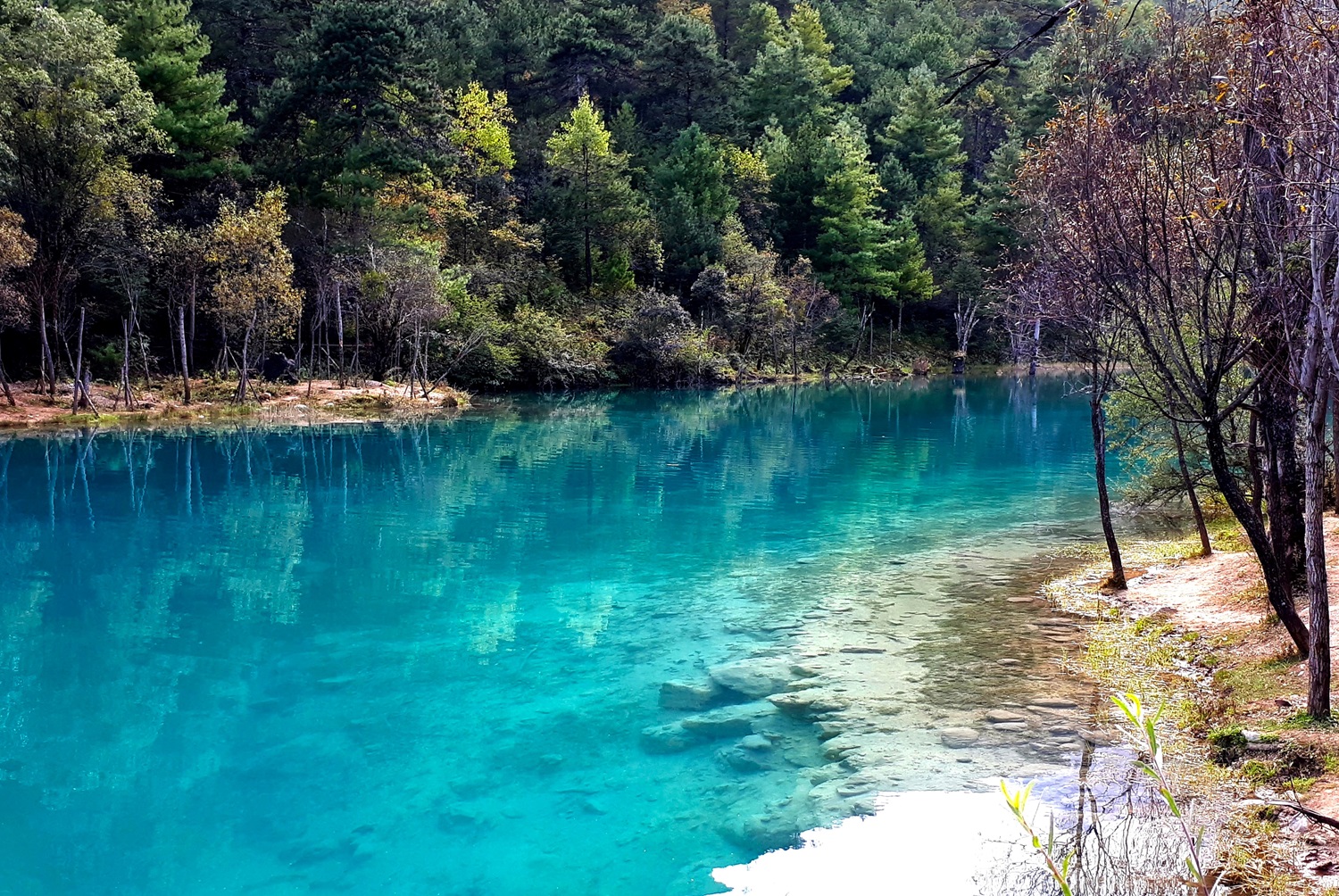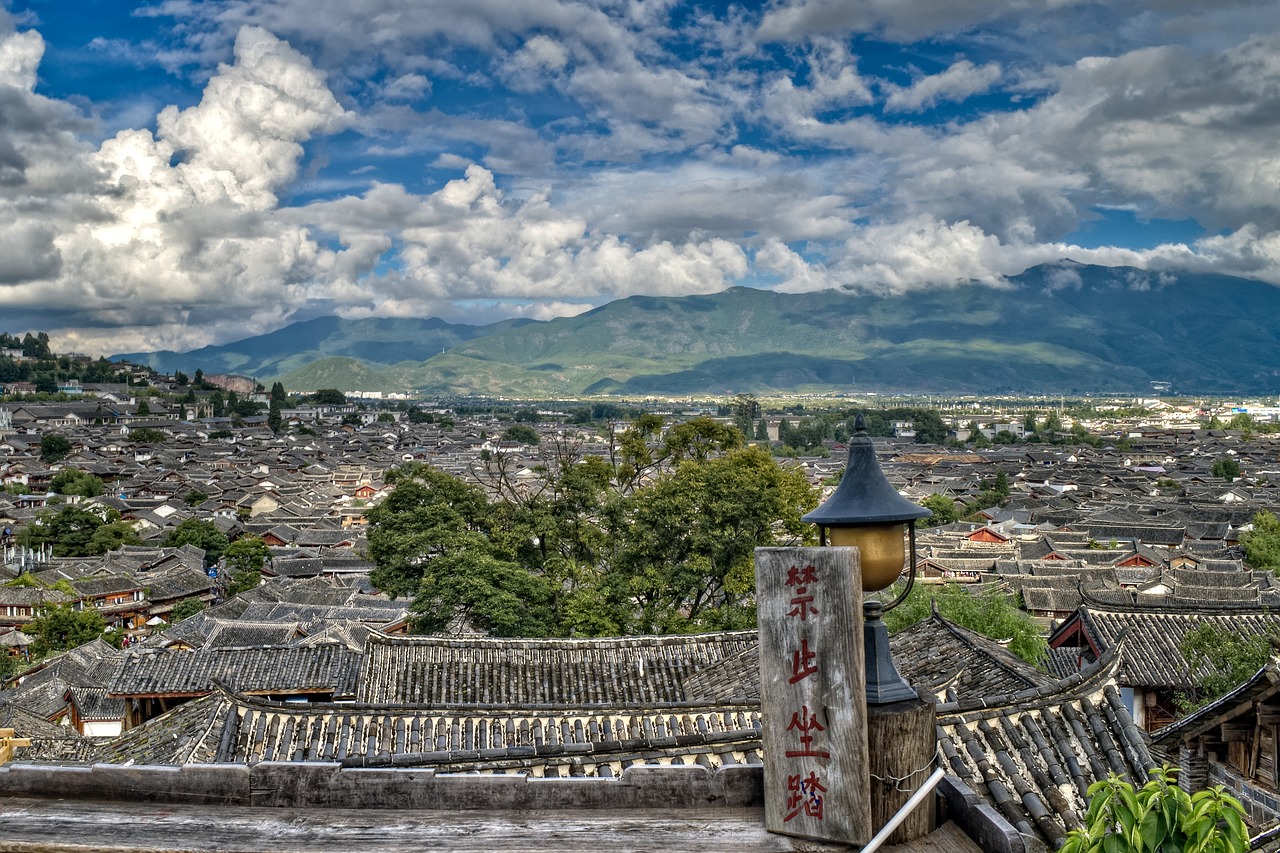

CHINA
Secrets of Shangri-la
China, with its vast landscapes and rich history, is a land of endless wonder. From the awe-inspiring Great Wall to its diverse culture, world-class cuisine, and modern cities like Shanghai and Beijing, China’s sites are nothing short of remarkable.
Shangri-La, a mystical region in China’s Yunnan province, captivates with its breathtaking landscapes. From the serene waters of Napa Lake to the stunning Tiger Leaping Gorge, nature enthusiasts will find paradise here. The region’s unique blend of Tibetan, Naxi and Bai cultures adds a cultural dimension to its allure.
Offering experiences that promise to amaze, inspire and leave lasting memories for travelers, we are glad to introduce our “Secrets of Shangri-la”-Tour as per below details.
Day 1. Arrival – Beijing
Welcome to China!
Embark on an awe-inspiring adventure to China, a land of extraordinary wonders and ancient traditions. From the magnificent Great Wall to the majestic Forbidden City, immerse yourself in the rich history and architectural marvels that define this vast nation. Explore the vibrant streets of Beijing and the vibrant nightlife of Shanghai. Indulge in the tantalizing flavors of Chinese cuisine, from the delicate dim sum to the fiery Sichuan dishes. Discover the diverse cultures, vibrant festivals and breathtaking natural beauty that make China a destination like no other. Uncover the secrets of this ancient civilization and create memories to last a lifetime in China.
On arrival in Beijing, we’ll be welcomed by the local guide and transferred to the hotel. Remaining time of the day at leisure.
Overnight in Beijing
Day 2. Beijing
In the morning we’ll head to the Temple of Heaven. The Chinese flock here to do Tai Qi, Kung Fu, sabre practice, meditation, tango and gymnastics. Some practice calligraphy on the park’s flagstones using giant brushes and water.
Our next visit is to the Forbidden City. According to ancient beliefs it faces south, towards Tiananmen Square. The construction of the City finished in 1420 and served as the Imperial administrative centre throughout the Ming and Qing Dynasties until the fall of the Empire in 1911. According to legend the Forbidden City is made up of 9999 different rooms. Restored in 2008 for the Beijing Olympics, the Forbidden City has since regained its youthful, vivid colours.
From here, we’ll make our way to the famed hutongs – the narrow alleys and streets of Beijing, located near Houhai Lake. We’ll visit the Gulou – the Drum Tower where during the Ming Dynasty, the city marked the hours of the day with the rumbling of drums. The tower faces the Zhonglou, the Bell Tower, and gives us a glimpse of ancient Beijing.
Overnight in Beijing
Day 3. Beijing – Jinshanling Great Wall – Beijing
Get ready to walk the Great Wall! We’ll visit the Jinshanling Section where we’ll retrace our steps back to the Qin Dynasty (more than 2,000 years ago) to find the first traces of the defensive walls. During the Ming Dynasty, workers restored and expanded the Wall to the height, width and length we recognize today.
With the lookout towers placed on the highest ridges, the guards could watch out for alarm fires down the wall in case of barbarian intruders. The wall slowed down Mongolian cavalry by forcing them to dismount from their horses before attacking.
At its peak, the wall extended over more than 6,000 kilometres across ancient Manchuria to the fort of Jiayuguan, where the Gobi Desert begins.
We’ll then drive back to the Hutong for a private cooking class where we’ll learn how to prepare three dishes. The class ends with a delicious meal of our freshly cooked dishes.
Overnight in Beijing
Day 4. Beijing – Dali
It’s time to leave Beijing and take the flight to Dali.
Upon arrival the guide will meet us and take us to the hotel.
Cangshan Mountain:
To the west of Dali rises Cangshan Mountain, a collection of 3,500m peaks which offer epic views of the town and lake sprawling through the valley below. Only in 1991 did construction begin on the Jade Cloud Road, a paved and sometimes precipitous walkway which leads you high up the mountain, past waterfalls and through secluded temples. The hike usually takes around 2 hours with an opportunity to camp for the most intrepid explorers.
Overnight in Dali
Day 5. Dali
Xizhou Village:
Walk through Xizhou, a traditional Bai village on the shores of Erhai Lake. We`ll explore the markets and learn about Bai architecture. We always recommend trying Xizhou pizza, a culinary treat that delights the taste buds of locals and travelers alike.
Traditional Rushan Cheese-making:
Peer into the courtyards of white-walled mansions in the tranquil town of Xizhou. After exploring the wet market, get ready for an education in making rushan, a dried, cow`s milk cheese which is rolled and fried before eating, and chow down on this delicious, if indulgent, local snack.
Bai Tea Ceremony:
Enter the traditional world of the Bai Tea Ceremony, an important ritual performed at weddings and festivals and governed by strict rules of etiquette. The water is boiled and tea steeped in a clay pot in front of you, before you are given the chance to sip three varieties which range from bitter to sour to sweet, this fixed order itself a metaphor for life`s journey through hardship to happiness.
Zhoucheng Village:
A resplendent artisan village resting at the base of Cangshan Mountain, Zhoucheng is a major center of Bai culture renowned for its unique tie-dye products. Alongside the locals, you’ll use indigo-based dyes to transform white cotton fabric into a dazzling variety of patterns and scenes, using the same simple stick tools and rubber bands as their predecessors centuries before.
We’ll then head back to the Old Town of Dali and explore some typical Bai homes. A relaxed and warm atmosphere seems to ooze from these white walled homes, often decorated by paintings representing mountains, running water, birds and flowers. Their front porches, famous throughout the country, are distinguished by beautifully carved arches.
Overnight in Dali
Day 6. Dali – Lijiang
In the morning we’ll head to Shibaoshan, an impressive collection of temples, caves and stone sculptures dating back to the 9th century. Of particular importance are the religious effigies, such as the statue of Guanyin, the goddess of mercy; and the renowned black Stone Treasure, believed to increase the chance of fertility.
In the afternoon, we’ll drive to Lijiang – a UNESCO-celebrated town and a magnificent labyrinth of traditional redwood and brick houses topped with grey slate roofs, surrounded by canals, stone bridges, and cobbled streets. It is a real paradise at the heart of the Naxi culture. Naxi people are most notable for their expertise in building canals, which assures each home has running water.
Crossing over the maze of alleyways, we’ll arrive at the “Lion Hill,” where we can relax over coffee while taking in the views over the village below.
At Mu Palace we’ll witness a vivid example of Ming and Qing architecture, based on the same style of architecture as the Forbidden City in Beijing. Our last stop is at Black Dragon Pond Park offering panoramic views of the famous Jade Dragon Mountain.
Overnight in Lijiang
Day 7. Lijiang
Dongba Culture Museum:
Dive into the detail of Naxi culture with a quick stop at the small but excellent exhibits of the Dongba Cultural Museum. Your guide will use the collection’s artifacts to illustrate the history of trade routes which spread all the way through Burma to India. But the undisputed highlight, is the Naxi script itself, a system of picture writing so creative that some texts can only be understood by whoever who wrote it.
Naxi Dongba Calligraphy:
The Dongba script is said to have been created by the founder of Bön, a Tibetan religion, in the seventh century. This ancient pictograph script is unique to the Naxi people and is largely mnemonic. Immerse in this wholly unique writing system by sitting down with one of the last remaining people still versed in it, a Dongba priest, who will walk you through the calligraphy and its meanings.
Baisha Village:
Located just north of Lijiang, Baisha is a Naxi village built of stone and wood at the foot of Jade Dragon Snow Mountain. Fewer travelers opt to stop in on their way to the mountain or on their cycle tour of the countryside, and so the village remains much as it was a century ago. Wares are sold from wooden carts along narrow streets and foot traffic makes way for cows being driven up the road.
Overnight in Lijiang
Day 8. Lijiang
Today, we head out into the countryside. We’ll stretch our legs with a walk through Wenhai Valley. Graced with remarkable biodiversity and large lush fields, the valley is home to fifteen types of rhododendron and many bird species. Keep a look out for yak and miniature horses! We’ll also meet a Yi village shaman.
Yuhu Village is located right at the foot of Jade Dragon Snow Mountain with its stone buildings seemingly tucked into the mountainside. We’ll explore the streets for a while before hiking out. Three hours of climbing later, we’ll be rewarded with beautiful views over Wenhai Valley with Lijiang far in the distance.
Overnight in Lijiang
Day 9. Lijiang – Shangri-la
Shangri-la really does exist!
We’ll transfer from Lijiang to Zhongdian – a stop along the old Tea Horse Road, a major trade route between Tibet and China in ancient times. Zhongdian is also part of ‘Shangri-la’, the mythical paradise described by novelist James Hilton. To this day, the Zhongdian area is still heavily influenced by the fascinating culture of Tibet.
Another major highlight of this Yunnan journey is the Tiger Leaping Gorge. One of the deepest gorges in the world, this natural crevice separating the Jinsha River has staggering variations in altitude (nearly 4,000m). As such, it has become a playground for global trekkers keen on defying the unforgiving terrain.
We’ll arrive in Zhongdian in the late afternoon and check in to the hotel.
Overnight in Shangri-la
Day 10. Shangri-la
After breakfast, we’ll visit the impressive Monastery of Songzanlin, an important place for Tibetan Buddhism still in use today. We can admire the glittering golden roofs of the monastery and soak in the countless prayer flags waving in the wind.
Our journey continues onwards to Napa Lake (difficult to reach outside of the summer season) surrounded by mountains and meadows where horses and yaks graze happily.
We’ll stop at the Ringha Temple – 700 years old and partially destroyed during the Cultural Revolution. The temple has now been rebuilt and is considered one of the first Buddhist temples in Yunnan Province.
Overnight in Shangri-la
Day 11. Shangri-la – Shanghai
Today we say goodbye to Shangri-la and board a flight to Shanghai. After arrival and check in at the hotel, there is time at leisure.
Experience the vibrant energy of Shanghai, where ancient traditions blend seamlessly with modern innovation. Marvel at the iconic skyline along the Bund, indulge in world-class cuisine, and immerse yourself in the bustling markets of Nanjing Road. From historic temples to futuristic skyscrapers, Shanghai captivates with its dynamic charm and cosmopolitan allure.
Overnight in Shanghai
Day 12. Shanghai
In the morning we will head to the French Concession. We’ll stroll through Fuxing Park to watch locals practicing their morning exercise, including colourful tango dancers. We’ll wander past old colonial homes that have now been transformed into restaurants, bars and boutiques. It’s hard to imagine that in the 1930s this area was once home to gangsters, mafia, opium traffickers and prostitutes!
We’ll continue our walk to Xintiandi, a renovated area and one of the liveliest parts of the city. In Tianzifang, we can wander through the maze of authentic alleyways full of restaurants, boutiques and small art galleries.
Our walk will end in the Old Town, which still has some of its old lilongs (similar to Beijing’s hutongs). This area is also home to the famous Yu Yuan Gardens, a superb example of the art of Chinese garden landscaping where rocks represent mountains; ponds represent lakes; and running water imitates rivers.
Overnight in Shanghai
Day 13. Shanghai – Departure
Let’s enjoy our last day in Shanghai until it’s time to check-out. In the afternoon, we will be taken to the airport for our onward flight.



